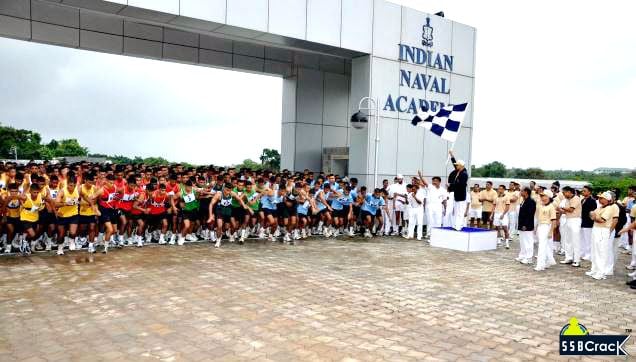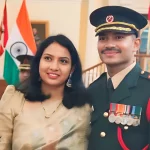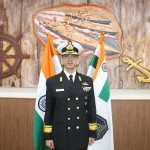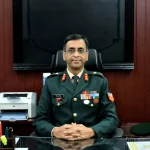The Indian Naval Academy is the premier officer training establishment of the Indian Navy located on the coasts of northern Kerala at Ezhimala , Payannur in the Kannur District. It is the initial officer training establishment of the Indian Navy and Indian Coast Guard. It conducts basic training for all officers inducted into the Indian Navy and Indian Coast Guard. NAVAC was established in May 1969, while its Ezhimala campus was inaugurated on 8 January 2009. It shares the 2,452 acres (9.92 km2) site with the naval base depot, INS Zamorin, and the naval hospital, INHS Navjivani.
Here I bring you some facts and all that you should know about the Indian Naval Academy:
1. Before independence, officer cadets of the Royal Indian Navy were trained in the UK with the Royal Navy. Cadets underwent four years of training in Dartmouth and were commissioned as Sub Lieutenants upon their return. In 1949, the officer training for the Navy began at the interim Joint Services Wing (JSW) of the Armed Forces Academy. The NDA was established in 1954 as the Joint Services Academy of the Indian Armed Forces. By 1968, the Navy realised that the NDA could not keep up with its expanding staffing requirements. It also needed additional space and facilities to impart advanced maritime skills to officers and sailors. In May 1969, the Indian Naval Academy was established in Cochin to consolidate facilities for naval training.
2. The motto of the institution is “Vidyayaa Amrutam Ashnute” which means to “Eat nectar through knowledge, i.e. be immortal through knowledge”.
3. Set up at the foot of seven hills of which Mount Dilli is the tallest ( 260 meters high ), this sprawling academy, which is also Asia’s largest, is spread over an area of 2,452 acres with a perimeter of 22 kms and is surrounded by a picturesque 7 km beach stretch. The serene Kavvayi backwaters in the region form an integral part of the academy which also has large forest area with a variety of flora and fauna.
4. This world class academy and a centre for academic excellence for the sea guardians of our country aims to provide University education to its young officers in a military environment in view of the growing complexity of Navy’s various responsibilities.
5. Apart from imparting quality training to the Indian Cadets, the INA, also trains the best cadets from friendly foreign nations like Palestine, Saudi Arabia, Afghanistan, etc.
6. The period of initial training, at INA Ezhimala, for 10+2 (Executive) and 10+2 (Technical) cadet entry is 4 years. The Naval Orientation course for Direct Entry is of 22 weeks duration. However, for cadets joining through NDA, it’s only 1 year at INA.
7. Upon joining, cadets have the option to opt for Electronics & Communication Engineering, Mechanical Engineering or Naval Architecture and are awarded a Bachelor of Technology degree upon graduation. Upon graduation, cadets are commissioned as Sub-Lieutenants in the Navy. Cadets majoring in Naval Architecture have to undergo an additional 6 months of training at the Naval Dockyard, Visakhapatnam after graduation. They also have the option to enroll for additional post-graduate specialisation in the field at the IIT, Delhi.
8. The Indian Naval Academy, in collaboration with some of the best institutes imparting technical education like the IITs , NITs and BITS across the country also offers its cadets with a broad-based spectrum of understanding the subjects by sending them to these selected institutions on educational tours under a memorandum of understanding ( MoU ).
9. The cadets of the Integrated Naval Academy Course ( INAC ) at the INA undergo a 4 year professional B-tech training curriculum aimed at improving their technical expertise with a qualified degree in mechanical engineering and electrical and electronics engineering for the cadets opting for technical and executive cadres of the Indian Navy respectively .
10. The subjects are categorised broadly into Physics, Chemistry, Mathematics, Meteorology, Oceanography and computers. Naval related Service subjects are also covered during the training period. In addition to this, the academy also prioritises giving practical and hands-on training to the under-trainees in Seamanship, Navigation, Watermanship or Damage Control and Fire Fighting.
11. On reporting at the academy, cadets are assigned to any one of the 5 squadrons which are planned to increase up to 16. Each squadron consists of five divisions with approximately 40 cadets in each division. Each division is commanded by a commissioned officer of the rank of Lieutenant, responsible for monitoring, guidance and counselling of the cadets. The squadron is headed by an officer of the rank of Lieutenant Commander. Squadrons are generally housed together in the same dormitory through classroom instruction and outdoor training are conducted separately depending on the cadet’s selected majors and specialisations.













